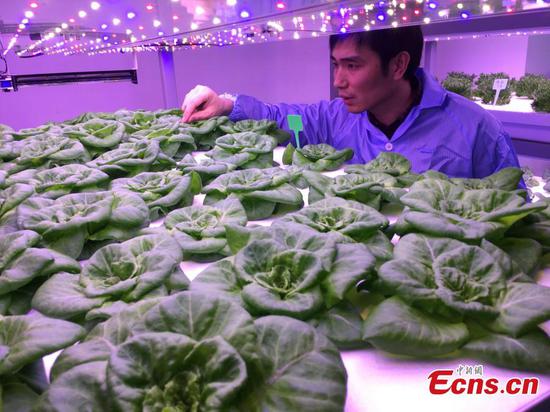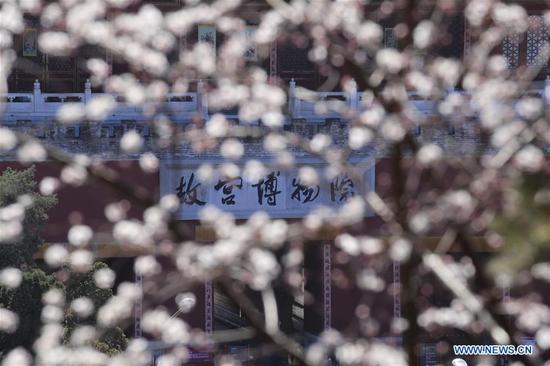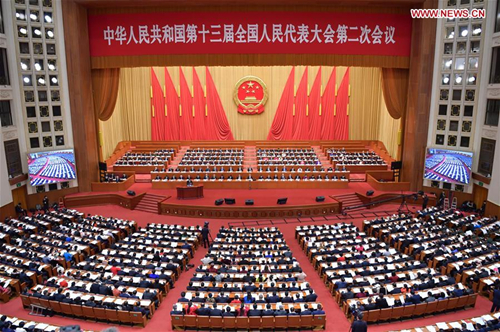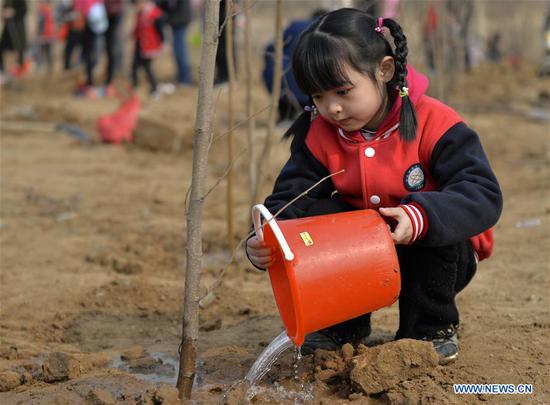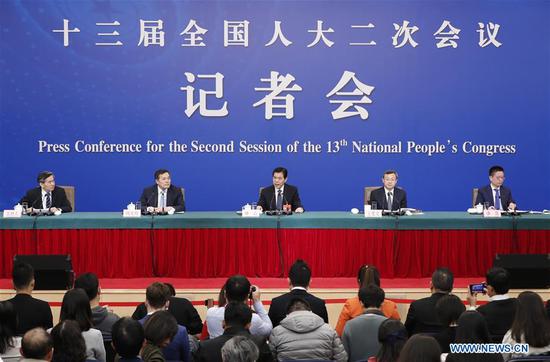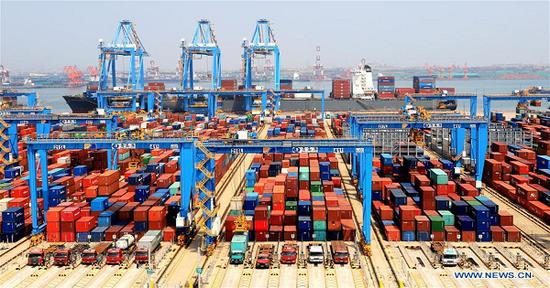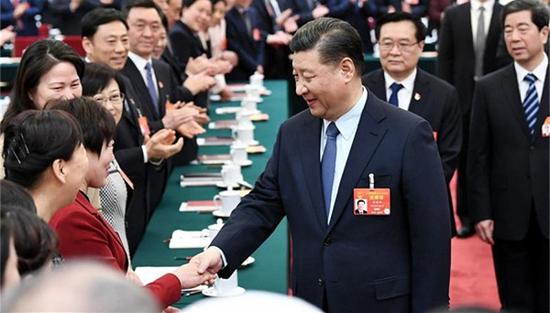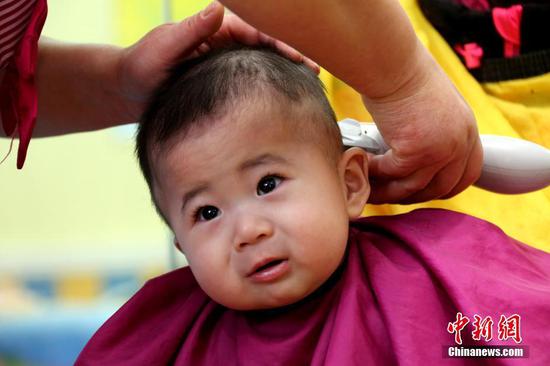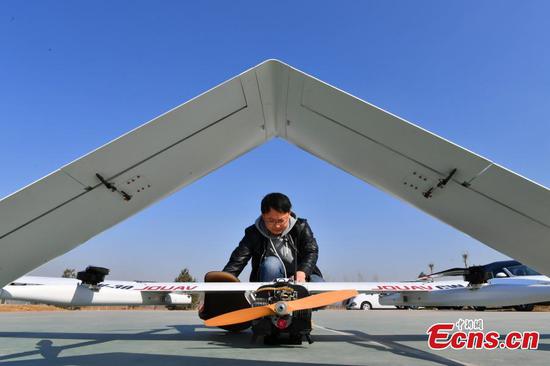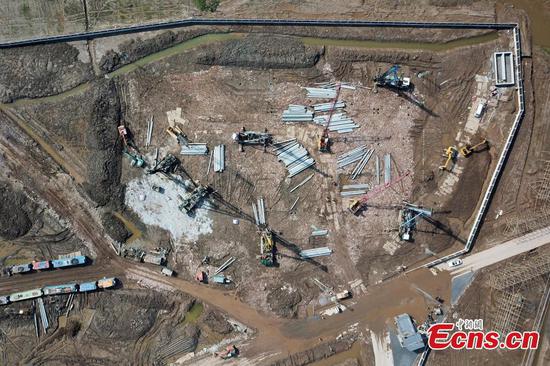
Job seekers speak with recruiters at Hefei University in Hefei, Anhui province, at a job fair for college graduates. (Photo/Xinhua)
In the Government Work Report presented to the national legislature on March 5, Premier Li Keqiang said the country will pursue an employment-first policy with full force. Which means that for the first time the employment-first policy has been elevated to the status of a macro policy.
The government and the Government Work Report both have always paid great attention to the employment issue, because employment influences social stability and is crucial for the success of the targeted poverty alleviation program, which the central leadership has attached high priority to in recent years.
This year's report mentions employment 30 times, the highest in recent years. No wonder the government has made stabilizing employment, which it advanced in the middle of 2018, the first among all its stabilization tasks.
That the government is pursuing an employment-first policy shows it is fully aware of the pressure on the macroeconomy in 2019. China's economic growth rate has been slowing in recent years, mainly because it is focusing on qualitative development rather than quantitative economic growth. The slowing growth rate, however, has exposed some risks such as high leverage, a slowing investment rate, insufficient new economic driving forces and foreign trade disputes.
For this year, the government has reduced its GDP growth target to 6-6.5 percent, and adjusted the surveyed unemployment rate to "about 5.5 percent" instead of "no higher than 5.5 percent" last year.
Moreover, the large-scale layoffs in the internet industry, as reported by the media, has made the public worried. And the ever-increasing labor force, especially the annual increase in the number of college graduates, has added to the public worries. For instance, a record high 8.2 million college graduates entered the job market last year, and their number is expected to increase to 8.34 million this year.
And since about 2 million additional migrant workers join the labor force every year, the country has to create at least 10 million jobs annually, which is a huge task especially if jobs also have to be created for other workers, such as veterans.
In addition, the labor market suffers from structural problems, including the insufficient supply of high-tech talents and oversupply of low-end workers.
Yet the slowing growth rate has not had much impact on the job market. For instance, with a GDP growth rate of 6.7 percent, China created about 13.14 million new jobs in 2016. In 2017, with a growth rate of 6.9 percent, the country created 13.51 million jobs. And despite a lower, 6.6 percent, growth rate last year, China generated 13.61 million jobs and kept the surveyed unemployment rate to a relatively low of 5 percent.
Furthermore, the government has always set a prudent employment target, but always maintained higher employment rate. Take 2018 for example. The government's target was to create 11 million urban jobs, whereas it created 20 percent more jobs.
Statistics show an increase of every 1 percentage point in GDP growth could produce about 2 million new jobs. Which means that even if growth is only 6 percent this year, the authorities can still meet the Government Work Report's target of creating 11 million urban jobs.
Since the government can continue creating more jobs on a yearly basis if it stabilizes economic growth, it should pay greater attention to the other urgent issue: the structural problem in the employment market. Indeed, to solve the structural problem, the government has launched a series of measures, including a 100 billion yuan ($14.87 billion) training program and a plan to increase enrollment in higher vocational colleges, so that more skilled workers can be produced to fill the shortage of such workers in China.
Promoting entrepreneurship, self-employment and launching innovation campaigns, too, could solve the employment problem to some extent. All these measures will help the government achieve the employment target this year. Still, it should address the structural employment problem in the job market by, among other things, cultivating high-end talents.
The author is a professor at the School of Economics, Renmin University of China. The views don't necessarily represent those of China Daily.









